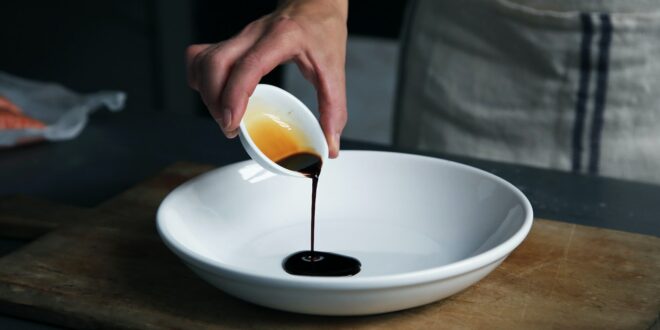It’s rich, fruity, concentrated and delicious; yet despite the best being valued as highly as fine wine, most of us in the 50 plus age group had to wait until we were well grown up to discover it! We’re talking about balsamic vinegar, a condiment that didn’t feature on the shelves of Kiwi stores until the 1970s, and even then, had to be hunted down in the best delicatessens.
But we weren’t the only latecomers to this somewhat mysterious product. Having originated in the middle ages, and been made for centuries in Italy, where it was considered a local speciality, it wasn’t until the 1880s, when it was shown at European trade fairs, that balsamic became internationally known. Today, the finest balsamic vinegars in the world still come from Italy, with the best of the best hailing from the regions of Modena and Reggio Emilia. But what exactly is balsamic, and how is it made?
Traditionally-made balsamic begins life as a grape must – a slurry of pressed grapes including juice, seeds, skins and even stems, with the best balsamic coming from the must of late harvest grapes (the last of the season). The must is cooked down until it’s concentrated by half. It’s then fermented for 3 weeks before being poured into wooden barrels to slowly concentrate for a minimum of twelve years. The different woods used to make the barrels, impart their own special flavour to the vinegar.
The balsamic barrels range in size, and once a year, thick, syrupy balsamic from the smallest barrel is drawn off to be bottled. The small barrel is topped up from the barrel the next size up, and so on until each barrel has a little in it from its neighbour, a process which helps concentrate the vinegar. In Reggio Emilia, the best bottles of balsamic are coded with a coloured metal cap – red for 12 year old vinegar, silver for 15-20 year old vinegar, and gold for balsamic that is 20-25 years old. The best balsamic can command over $200 for just 3-4 tablespoons! If your finances are up to it, some of the best to be had is labelled ‘Aceto Balsamico Tradizionale di Reggio Emilia DOP’ or ‘Aceto Balsamico Tradizionale di Modena DOP’ (the DOP standing from ‘Protected Designation of Origin’).
For mere mortals, however, your best bet to finding a fine balsamic is to check the ingredients on the back of the bottle. If the only ingredient listed is ‘grape must’, chances are you’re onto a good thing. But if you see ‘wine vinegar’, ‘caramel’ or other flavourings and ingredients, be on your guard.
However, before you get too precious, it pays to consider just what you want to use the balsamic for. If you’re after an addition to vinaigrettes or dips, there’s probably no harm done with a cheapie. But if you want your balsamic as a drizzle over strawberries or roast peaches, a marinade or a reduction for meats, or a finish to risotto, you’d be well advised to take it up a notch.
That doesn’t mean we have to look abroad, though, because as we all know, Kiwis are innovators, and we’re already growing some of the finest grapes in the world. This means delicious and absolutely affordable balsamic is now being produced right here in New Zealand, with TasteMaker’s Premium Aged Balsamic Vinegar one of the best on the supermarket shelves.
Next time you reach into your pantry for balsamic, ponder on this unusual condiment’s history. It’s come a long way from being a rough medieval concoction, to being an everyday ingredient Kiwis can’t live without. If you’re hunting out a special gift for a foodie in the family, head for the top shelf and surprise them with a bottle of the best. Enjoy!










Join the Discussion
Type out your comment here:
You must be logged in to post a comment.